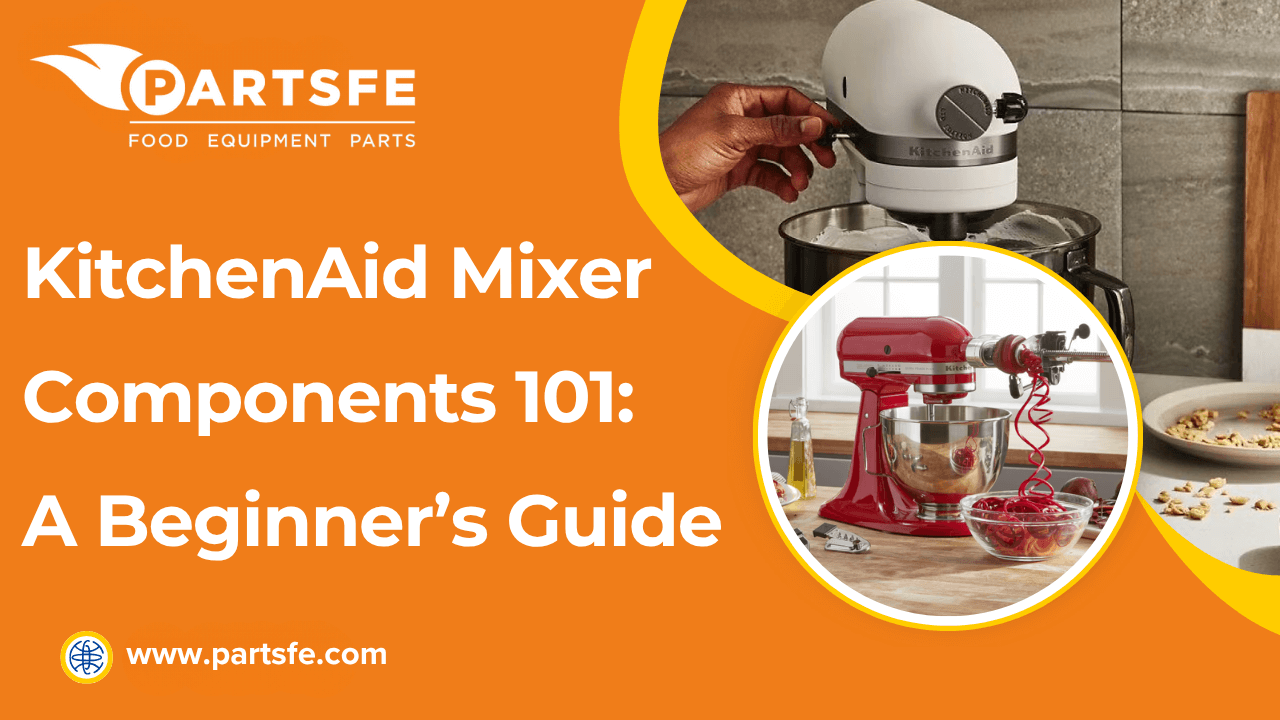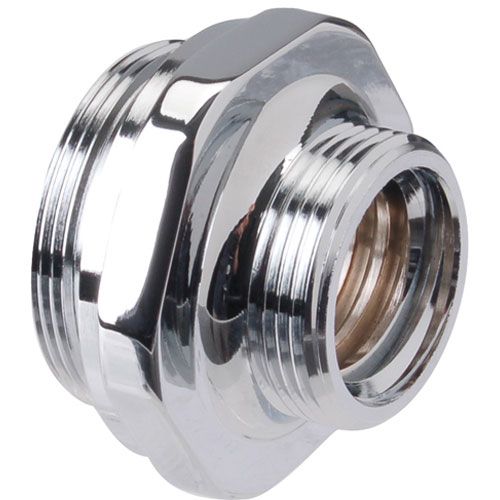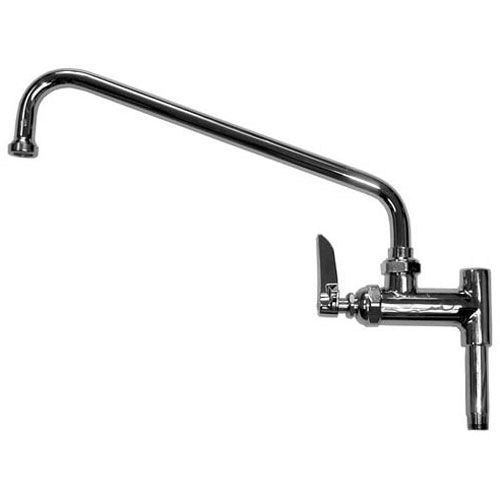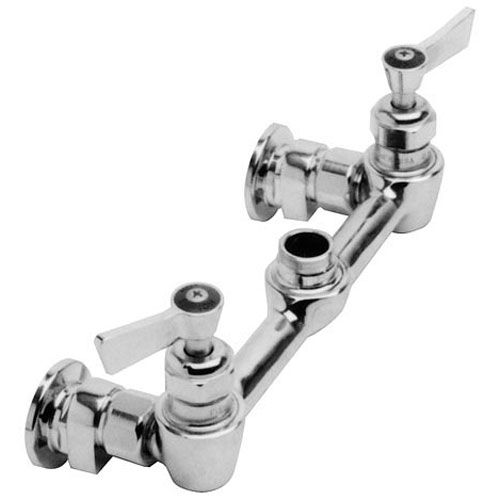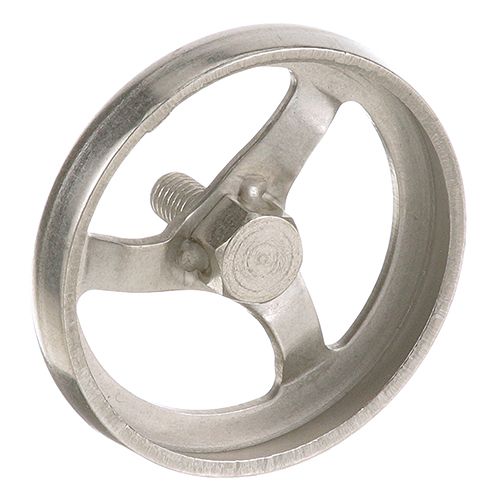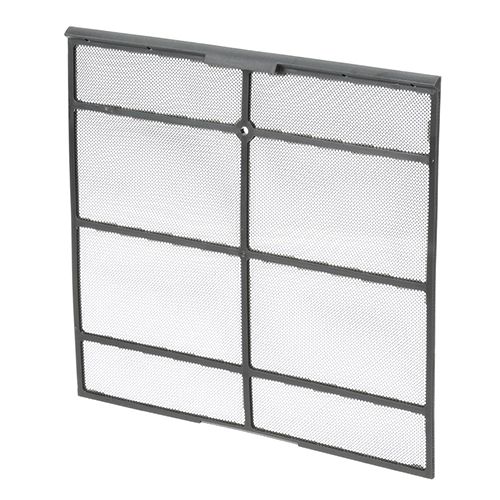KitchenAid Mixer Components 101: A Beginner’s Guide
A KitchenAid stand mixer is a staple in many commercial restaurant kitchens, known for its power, durability, and versatility. Whether you're prepping dough for fresh bread, mixing batters for desserts, or creating specialty sauces, understanding the key components of this reliable appliance is essential for efficient kitchen operations. From the heavy-duty mixing bowl to the wide range of professional-grade attachments, each part is designed to handle the demands of a high-volume kitchen. This guide is tailored for chefs, kitchen staff, and restaurant owners looking to maximize the performance of their mixer. We’ll walk you through the essential Kitchenaid mixer components, explain their functions, and share best practices to help your kitchen run smoother and more efficiently.
Why KitchenAid Mixer Components Are Crucial for Commercial Kitchen Performance
Commercial kitchens demand equipment that can withstand heavy use without compromising on quality. KitchenAid mixer components are engineered to deliver durability, precision, and versatility. Their performance directly impacts food prep speed, consistency, and overall kitchen productivity.
Key reasons why KitchenAid mixer components are crucial for commercial kitchen performance:
-
Specialized Attachments: Flat beater, dough hook, and wire whip are designed for blending, kneading, and whipping, ensuring consistent results.
-
Large Capacity Bowls: Sized and built to handle big batches, essential for high-volume production.
-
Power Hub Versatility: Enables use of additional attachments like meat grinders, pasta rollers, and slicers, increasing multifunctionality.
-
Durability: Proper use of components prevents wear and extends the life of the mixer.
-
Improved Efficiency: Reduces manual labor and prep time, streamlining the kitchen workflow
-
Consistent Quality: Helps maintain food standards through reliable mixing performance.
Knowing these components helps commercial kitchen staff operate the mixer effectively, maintain it properly, and ensure consistent, high-quality results in a demanding work environment.
Looking for reliable KitchenAid mixer components? At PartsFe, find genuine parts like mixing bowls, dough hooks, and wire whips from top brands including KitchenAid, Hobart, and Globe to keep your kitchen running smoothly!
Key Parts of a KitchenAid Mixer: What You Need to Know
Understanding the KitchenAid mixer parts is essential for maximizing its performance, especially in a busy commercial kitchen. Each part has a distinct function in assisting you in consistently and effectively preparing dishes.
-
Power Cord: The Power cord supplies electricity to the mixer, ensuring reliable power for extended use.
-
Mixing Bowl: KitchenAid mixing bowls come in a range of sizes. Typically made of sturdy stainless steel, it locks securely in place to handle large batch mixing without slipping.
-
Mixing Bowl Handle: Makes it possible to handle and remove the bowl with ease, even when it is full.
-
Thumb Screw: Secures the bowl or attachments firmly to the mixer for safety during operation.
-
Motor Housing: The core of the mixer protects the powerful stand mixer motor that drives the mixing action.
-
Planetary Gear System: Ensures thorough mixing by moving the attachments in a planetary motion, covering every angle of the bowl.
-
Transmission Cover and Gearbox Assembly: Protect the internal gears and facilitate smooth power transfer from the motor to the attachments.
-
Attachment Hub: KitchenAid attachment hub is located at the front, and it connects specialized attachments, expanding the mixer’s versatility beyond mixing.
-
Beater Shaft: The beater shaft is a rotating component that holds and spins the mixing attachments.
-
Mixer Base: Gives the machine a solid base to keep it from shifting while it's operating.
-
Speed Control Lever: Offers precise control over mixing speeds, allowing for slow kneading or fast whipping.
-
Mixer Head: The upper part housing the motor and gearing, which tilts back for easy access to the bowl and attachments.
Mastering these components and stand mixer accessories ensures smoother operations, faster turnaround, and better quality, vital for any successful commercial kitchen.
Understanding Different KitchenAid Mixer Attachments and Their Uses
KitchenAid stand mixer attachments are known for their versatility, offering a wide range of tools that expand functionality beyond basic mixing. Each attachment is designed to handle specific culinary tasks, making the mixer an all-in-one kitchen powerhouse.
Flat Beater
The flat beater, also known as the KitchenAid paddle attachment, is ideal for mixing cake batters, cookie doughs, and frostings. It provides thorough blending without overworking ingredients.
Uses:
-
Mixing batters
-
Cookie dough
-
Frostings
-
Mashed potatoes
-
Other medium-to-heavy mixtures
Wire Whip
Perfect for incorporating air, the KitchenAid wire whip is used for whipping cream, egg whites, and making meringues to achieve light, fluffy textures.
Uses:
-
Whipping cream
-
Beating egg whites
-
Making meringues
-
Mousse and other airy mixtures
Dough Hook
Specifically engineered for kneading dough, the dough hook saves time and effort in preparing bread, pizza, and pasta doughs by mimicking hand kneading.
Uses:
-
Kneading bread dough
-
Pizza dough
-
Pasta dough
-
Other yeast-based doughs
Pasta Roller and Cutter
By rolling the dough to the appropriate thickness and cutting it into shapes like spaghetti or fettuccine, these accessories make it possible to make pasta at home.
Uses:
-
Rolling pasta sheets
-
Cutting fresh pasta into spaghetti, fettuccine, and other shapes
Food Grinder
Useful for grinding meats, vegetables, or making homemade sausages, this attachment broadens your kitchen capabilities.
Uses:
-
Grinding meat for burgers or sausages
-
Preparing vegetables for sauces
-
Making homemade ground products
Slicer/Shredder
This attachment efficiently slices and shreds vegetables, cheese, and more, perfect for salads, casseroles, or garnishes.
Uses:
-
Slicing vegetables for salads or stir-fries
-
Shredding cheese
-
Preparing ingredients for casseroles or garnishes
Understanding mixer attachments, including various mixer beater types, helps users get the most out of their mixers. This knowledge saves time and boosts creativity in the kitchen.
Common Mistakes to Avoid When Using a KitchenAid Mixer
Using a KitchenAid mixer for beginners or professionals efficiently saves time and enhances food quality. Avoiding common mistakes ensures optimal performance and extends its lifespan, especially in busy commercial kitchens.
-
Overloading the Mixer: Mixing batches that exceed your mixer’s capacity strains the motor and causes uneven results. Always follow the recommended limits to avoid damage and overheating.
-
Using the Wrong Attachment: Each attachment is made for specific tasks, so using the wrong one leads to poor mixing and can harm the mixer. Match the attachment carefully to your recipe needs.
-
Starting at High Speed: Starting the mixer on high speed can cause splattering and stress on the motor. Use KitchenAid speed settings by beginning low and increasing gradually.
-
Ignoring Maintenance: Skipping regular cleaning and inspection allows residue buildup, which affects performance and hygiene. Your mixer's lifespan can be increased with proper maintenance.
-
Not Securing Attachments Properly: Loose attachments can wobble or even detach during operation, risking safety and compromising quality. Always ensure attachments are firmly locked in place before use.
You may increase the effectiveness, dependability, and lifespan of your KitchenAid mixer components by avoiding these typical errors.
Check our detailed guide on how to fix a KitchenAid commercial mixer to maintain peak performance and avoid costly downtime.
Tips for Troubleshooting Common KitchenAid Mixer Issues
Even the most reliable KitchenAid mixers can occasionally experience issues, but many common problems are easily fixable with simple stand mixer troubleshooting steps. Time can be saved and expensive repairs can be avoided by knowing how to recognize and fix these issues.
The mixer won’t start when turned on.
This is often due to power supply problems or a faulty switch.
Fixes:
-
Make sure the power switch is on and the mixer is plugged in correctly.
-
Check your home’s circuit breaker or fuse for any tripped switches.
-
To make sure the outlet is operational, test it with another device.
-
Look for any obvious damage on the power cord and replace it if needed.
The mixer runs but fails to mix ingredients effectively.
Loose or improperly attached parts can prevent proper mixing.
Fixes:
-
Make sure the attachment is securely locked into the hub.
-
Verify that the mixing bowl is properly seated and locked on the base.
-
Check if the attachment is the correct one for the recipe.
-
Avoid overloading the mixer with too large a batch.
The mixer produces unusual noises or excessive vibrations during operation.
This is usually caused by an unbalanced load or loose parts.
Fixes:
-
Reduce the batch size if the load is too heavy.
-
Ensure attachments are properly installed and tightened.
-
Check for any foreign objects stuck between the bowl and attachments.
-
Look for any signs of wear or damage on the motor housing and gears.
The mixer overheats or the motor shuts off unexpectedly.
Overheating occurs due to motor strain from continuous use or heavy loads.
Fixes:
-
Before restarting, let the mixer cool for 20 to 30 minutes.
-
Do not leave the mixer running all the time.
-
Mix smaller batches to reduce motor strain.
-
Ensure ventilation around the mixer is not blocked.
The beater does not spin, or the mixer does not move.
This can be caused by damage or obstruction in the drive hub or attachments.
Fixes:
-
Inspect the drive hub and attachment for damage or blockages.
-
To avoid accumulation, lubricate and clean moving parts regularly.
-
Replace worn or broken attachments immediately.
-
Tighten the attachment knob securely before starting the mixer.
When repairs are needed, using genuine KitchenAid replacement parts ensures your mixer maintains optimal performance and durability.
Check out this helpful Hobart mixer troubleshooting guide for solutions and tips to keep your mixer running smoothly.
How to Choose the Right KitchenAid Mixer for Your Needs
Choosing the right KitchenAid mixer depends on your cooking volume, kitchen space, and specific tasks. With various models and sizes available, it’s important to match features to your needs. The right mixer can boost both efficiency and results.
Bowl Capacity:
-
Classic series (4.5-quart) is ideal for casual home bakers.
-
Artisan series (5-quart) suits moderate to frequent bakers.
-
Professional series (6–7 quart) is best for large batches and heavy-duty use.
Motor Power:
-
Light batters and basic mixing can be handled by standard motors.
-
Bread dough and dense mixtures require stronger motors in pro or commercial models.
Attachments and Versatility:
-
All models support a variety of attachments.
-
Higher-end models may offer more included tools or compatibility with specialty attachments.
Size and Storage:
-
Not all kitchen cabinets can accommodate larger mixers.
-
Consider countertop space and storage if you don’t plan to keep it out all the time.
Style and Color:
-
If the mixer remains on the counter, pick a design that blends in with your kitchen.
-
KitchenAid provides a wide range of colors to complement your kitchen's design.
-
Look for limited editions if you want a unique or collectible model.
You can select the mixer that best suits your requirements by taking these things into account.
How to Maintain and Clean Your KitchenAid Mixer Components
Proper maintenance and cleaning of your KitchenAid mixer components are essential to keep it running smoothly and extend its lifespan. Regular care prevents food buildup, mechanical wear, and potential cross-contamination in busy kitchens.
-
Unplug Before Cleaning: To protect yourself, always unplug the mixer before cleaning. This prevents any accidental starts or electric shocks during maintenance.
-
Remove and Clean Attachments: Take off all the attachments, including the mixing bowls, dough hooks, and beaters. If the handbook permits, you can either wash them in warm, soapy water or put them in the dishwasher.
-
Wipe Down the Mixer Body: To get rid of any spills or residue, wipe the outside of the mixer with a moist cloth. To prevent damaging the finish, do not immerse the unit or use harsh chemicals.
-
Clean Hard-to-Reach Areas: To reach into nooks and crannies and the area surrounding the attachment hub, use a soft brush or toothbrush. This keeps the mixer clean and helps get rid of tough food particles.
-
Dry Thoroughly: Before reassembling, ensure that every component has dried completely after washing. This prevents rust, mildew, and helps maintain the longevity of your mixer.
-
Inspect for Wear: Check attachments, knobs, and gears for excessive wear or damage regularly. Early detection can prevent bigger mechanical issues down the line.
-
Lubricate Moving Parts: Apply food-grade lubricant to moving components as recommended by the manufacturer. This keeps the mixer running smoothly and reduces friction.
-
Tighten Loose Screws: Check and tighten the mixer's loose screws and fasteners regularly. This ensures stability and prevents parts from loosening during use.
-
Proper Storage: Store your mixer with the bowl and attachments removed to avoid unnecessary strain on parts. Keeping components separate helps prolong their lifespan and functionality.
Understanding KitchenAid mixer components, using the right attachments, avoiding common mistakes, and performing regular maintenance are essential for maximizing performance and durability in demanding commercial kitchen environments. You may drastically cut down on repair expenses and downtime by taking the time to become proficient with your mixer's functions and troubleshoot frequent problems. By selecting the appropriate model suited for high-volume use and maintaining it properly, you ensure your KitchenAid mixer remains a reliable and indispensable tool in your restaurant’s daily operations. With proper care, it will consistently deliver professional-quality results, helping maintain efficiency and food quality in even the busiest kitchens.
FAQs
Do all KitchenAid attachments fit all mixers?
Most KitchenAid stand mixer attachments are designed to fit any model using the universal power hub. However, bowls and beaters are not always interchangeable and depend on the specific mixer size and type.
Why is my KitchenAid mixer turning dough grey?
This can happen when uncoated aluminum beaters react with acidic ingredients or moisture, causing oxidation. To prevent this, use coated or stainless steel attachments.
What is the most common size of KitchenAid mixer?
The 5-quart tilt-head mixer is the most widely used model, ideal for most home kitchens. It offers a versatile capacity without taking up too much counter space.

